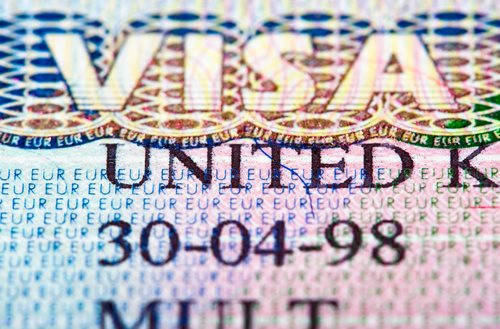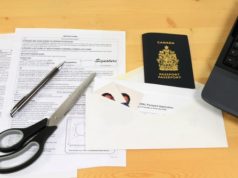
Differences Between a Visa and a Passport
When it comes to international travel, two documents that play a crucial role in the process are a visa and a passport. Both are necessary for crossing borders, but what exactly is the difference between the two? In this article, we’ll explore the distinctions between a visa and a passport and why understanding them is important for anyone planning to travel abroad.
What is a Passport?
A passport is a document issued by a government to its citizens that verifies their identity and citizenship. It includes personal information such as name, date of birth, and a photograph. All passports have a unique number that helps identify the holder. Passport holder’s data is stored in a database, maintained by their government.
The primary purpose of the passport is to allow its holder to travel internationally. When passing through border control, a passport is presented to the immigration officials who inspect the holder to ensure they meet the entry requirements of the destination country. The passport allows them to enter a foreign country with permission to stay for a set amount of time, depending on the rules of that particular place.
What is a Visa?
A visa is an official authorization or endorsement that is added to a passport. The visa permits its holder to enter, leave, or remain in a foreign country for a specific reason and length of time. Countries often require visas for foreign nationals to enter their borders, and all visas have an expiration date.
A visa can be issued for different reasons, such as travel, work, study, business, family visits, or medical treatment. Different types of visas are offered by countries depending upon the purpose of travel. The most common types of visas are tourist visas, student visas, business visas, and work visas. To obtain a visa, the applicant must submit a formal visa application and pay a fee.
Key Differences Between a Visa and a Passport
Now that we understand what a passport and visa are let’s explore some of the differences between them:
1. Purpose:
The primary function of a passport is to identify the holder and verify their citizenship. In contrast, the visa is a document that is added to the passport and permits the holder to enter a foreign country for a specific reason and duration.
2. Issuer:
A passport is issued by the government of the holder’s country, while a visa is issued by the government of the country they want to visit. Hence, visas can vary between countries depending on the agreement in force.
3. Cost:
The cost of a passport is usually more expensive than that of a visa. But the cost of the latter can vary depending on the type of visa, the duration of stay, and the number of entries.
4. Validity:
A passport is usually valid for several years (10 years in the case of US citizens) while a visa’s validity depends on the type of visa and the issuing country. However, most visas are only valid for a limited amount of time, often ranging from a few days to several months.
5. Requirements:
To obtain a passport, the individual needs to show proof of citizenship and provide personal information. The application process varies from country to country. Getting a visa can be more complicated. Requirements often include filling out a detailed application form, submitting additional documents such as a personal statement, bank statements, and invitation letters as required.
6. Usage:
A passport can be used as an “identification” document both domestically and internationally, as it is an official document issued by a government. Meanwhile, a visa can be used to travel to a specific foreign country. Upon arrival, the holder provides their passport and visa to be granted entry.
7. Benefits:
Possessing a passport helps citizens enter and leave their home country, access government services abroad, and assists in applying for a visa to other countries. A travel visa provides temporary authorization to live / make trips to a foreign country.
8. Timeframe:
The validity of a visa is limited to the time permitted by the embassy. It is usually granted for shorter stays, including tourist and short-term business travel, while passports usually have validity of ten years so long as required documents are up to date
9. Renewal:
Passports are easier to renew than a visa, as it only needs a fresh photo, appropriate fee payment, and the renewal form. Visa renewal process can be more bureaucratic and complicated.
Conclusion
In conclusion, while both documents are crucial for international travel, it is important to understand the differences between visas and passports. It is important to have your passport at the beginning as the visa sticker is issued on one of the passport pages. A passport is a government-issued document that serves as proof of identity and citizenship, while a visa provides official permission for the holder to enter, leave, or remain within a foreign country under a specific set of circumstances. Finally, it is important to keep both documents up to date for seamless travel.
There are a number of similarities between a passport and a visa, but there are also substantial differences between the two. A passport is needed for travel to any international destination, no matter what route a resident of the United States of America selects for their travel plans. A visa is only needed for travel to certain countries. American travelers do not need to obtain a visa if they are traveling through Europe, although depending on the county, a visa may be needed for visits lasting thirty to one hundred and eighty days in a single country.
A passport is issued by the country from which the traveller departs. A visa is issued by the country to which to traveler arrives.
Although any international travel will require a passport, a travel agent or a person who works in a country’s embassy or consulate can be an invaluable resource for individuals who want to find out if they will need to
obtain a visa to visit a country.
There are fourteen common visa categories, although not every kind of visa is offered by each country. The common visa types are a transit visa, a tourist visa, a business visa, a temporary worker visa, an on-arrival visa, a spousal or partner visa, a working holiday visa, a diplomatic or official visa, a courtesy visa, a marriage visa, and an immigrant visa, as well as a pensioner, retiree or retirement visa.

























